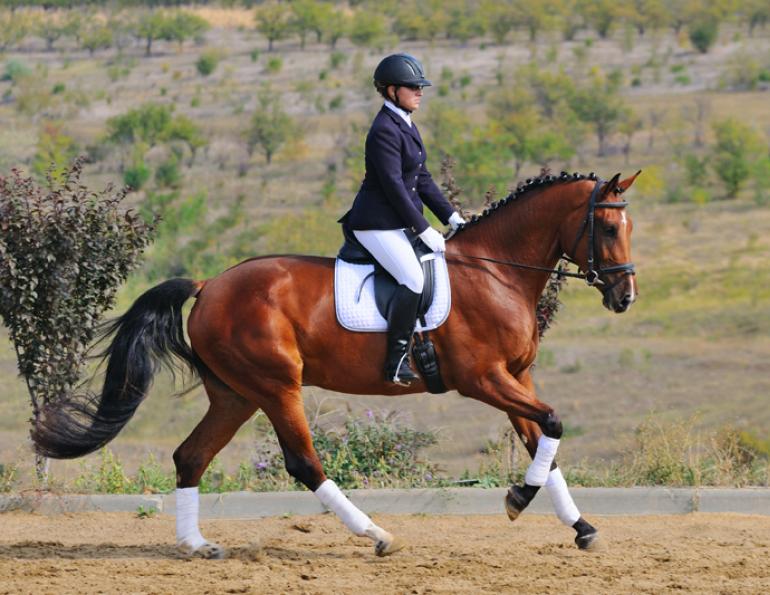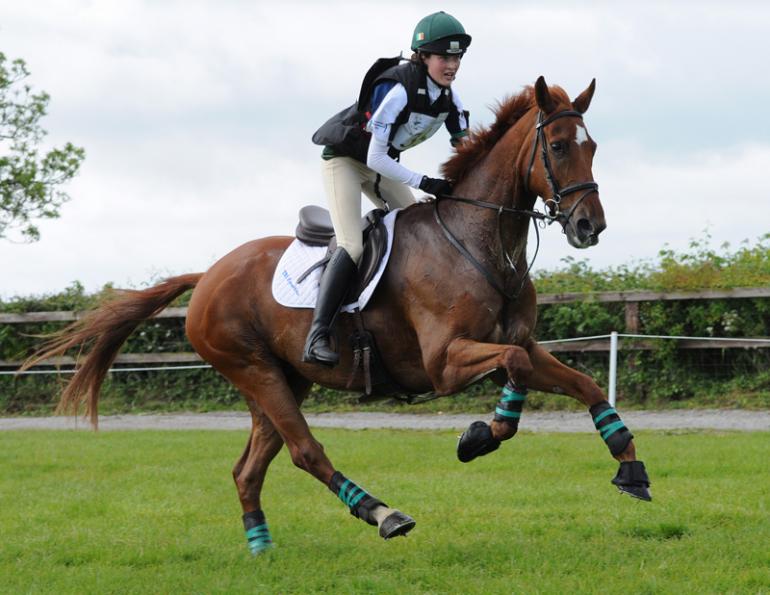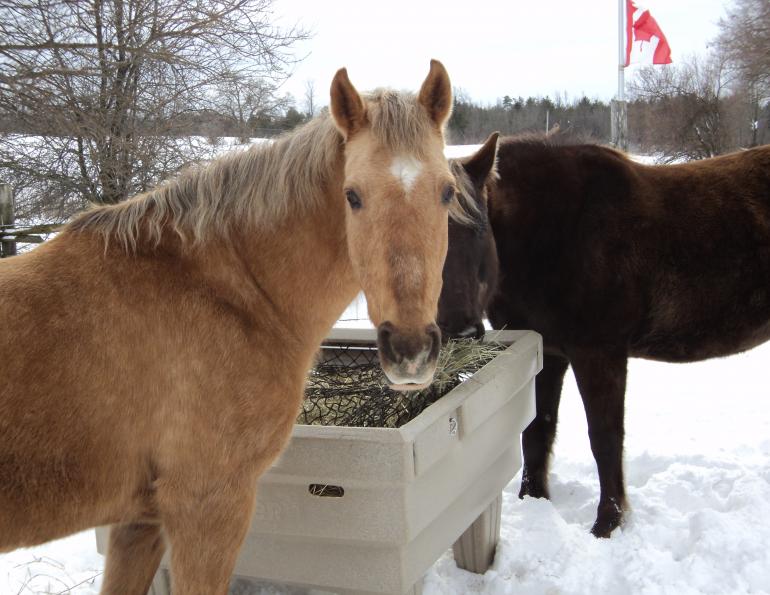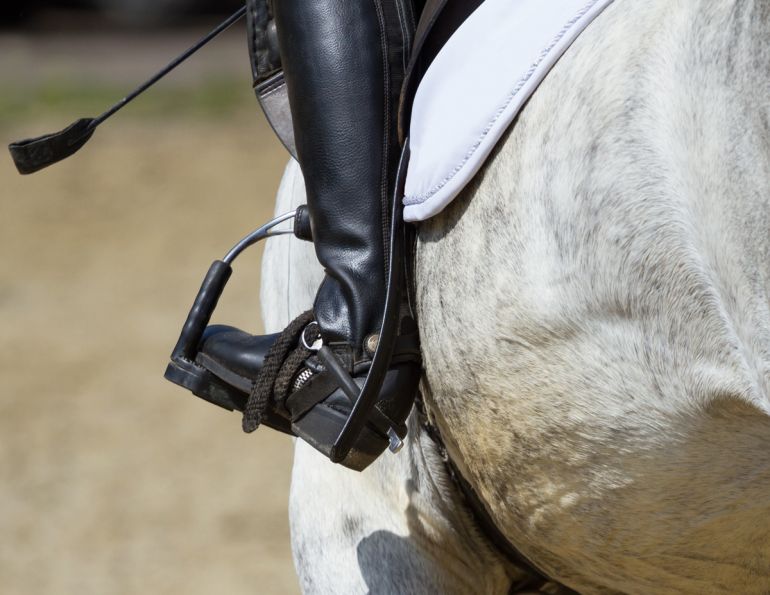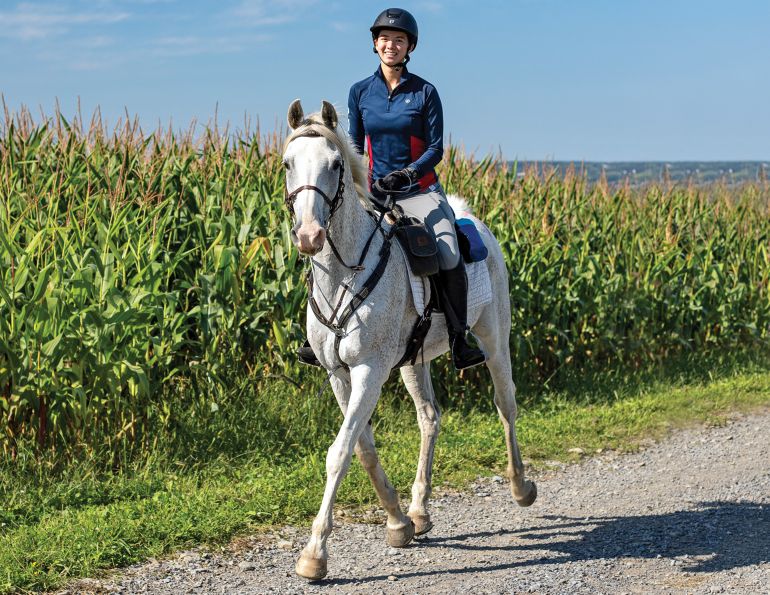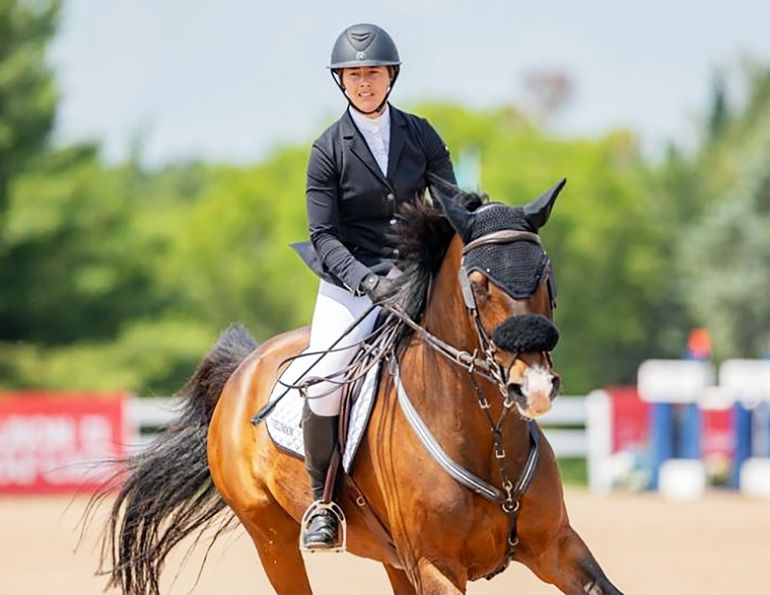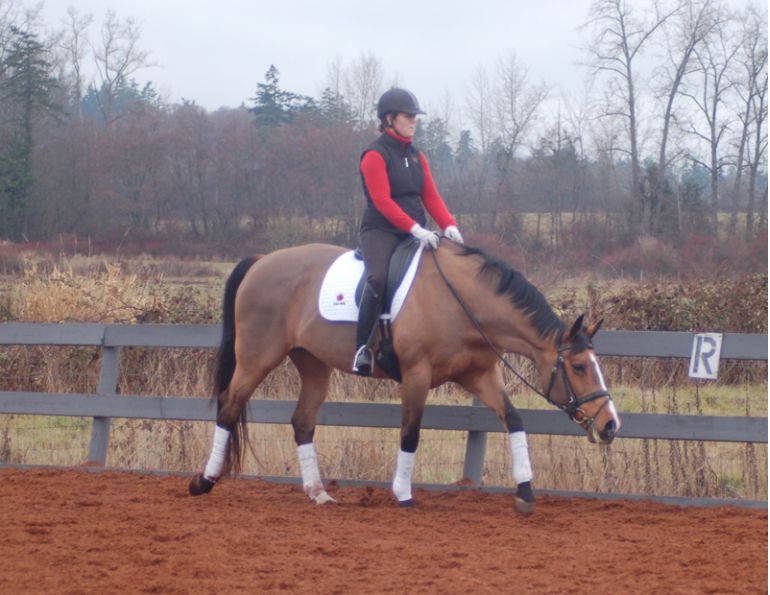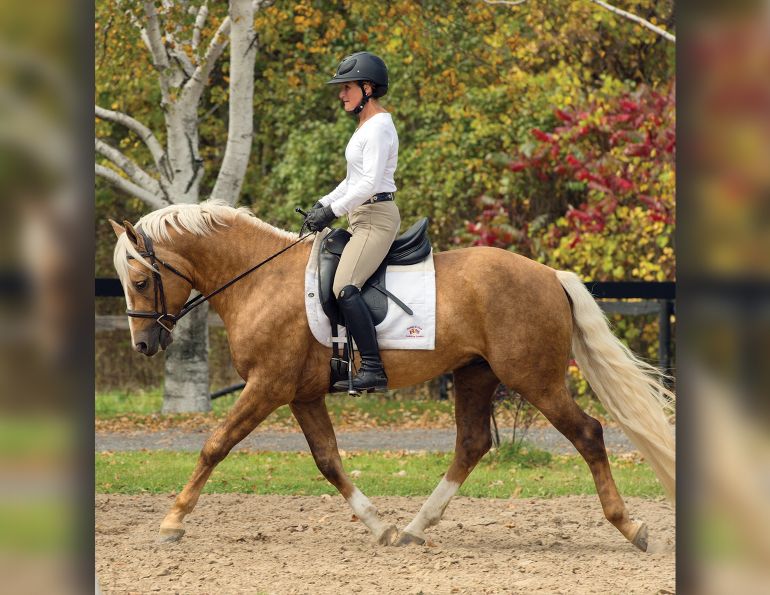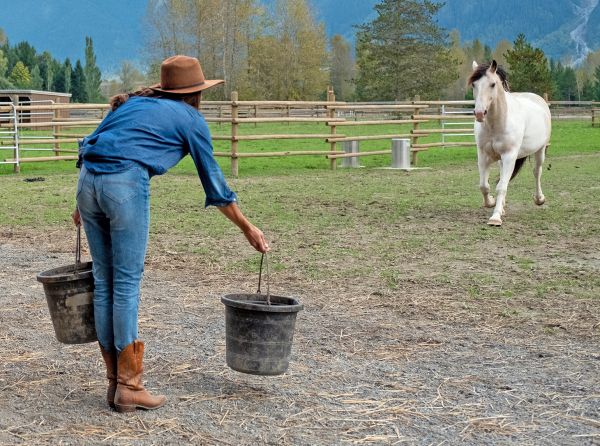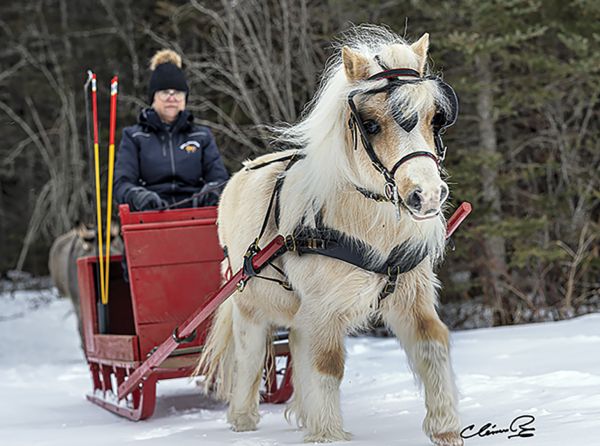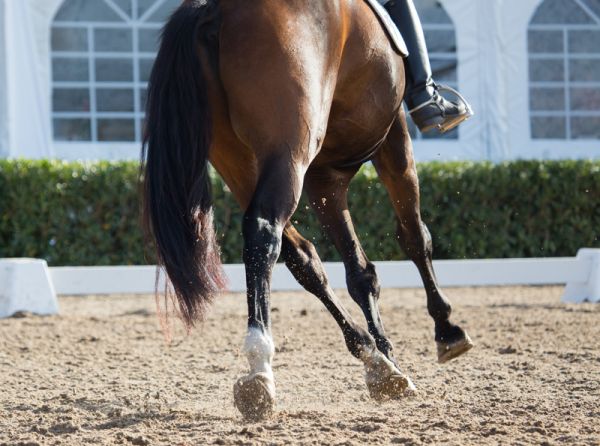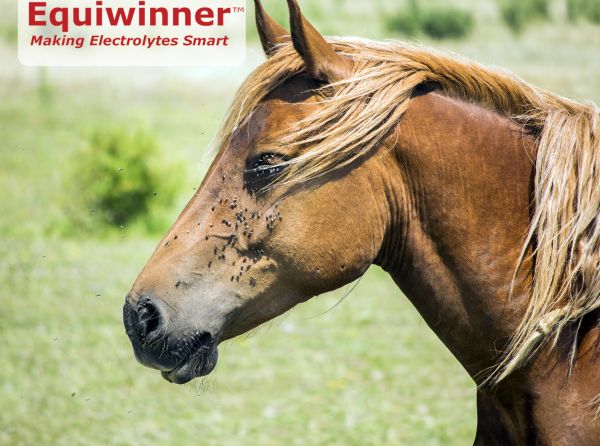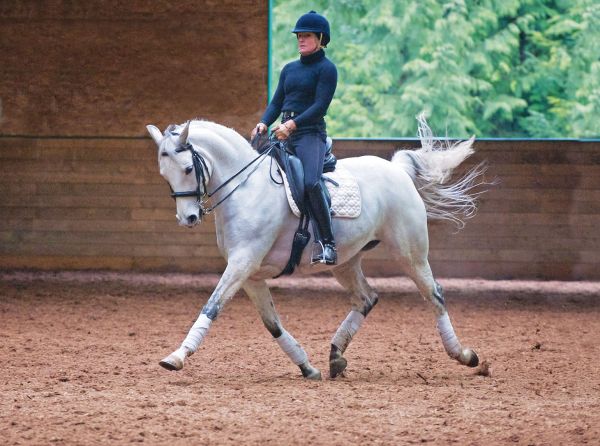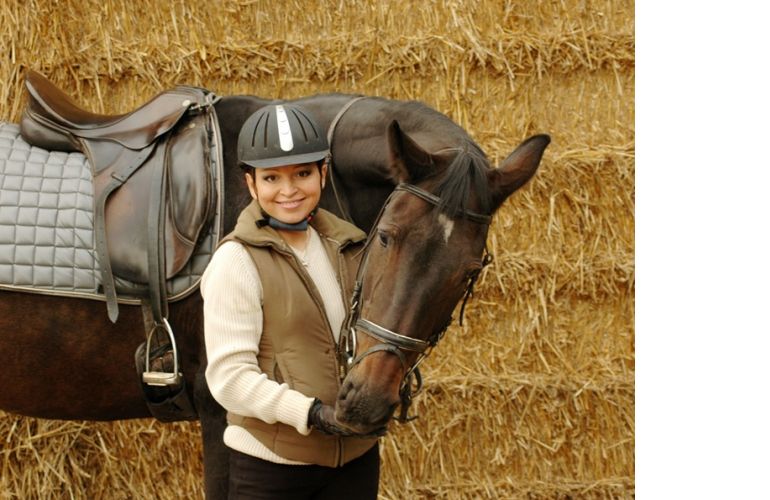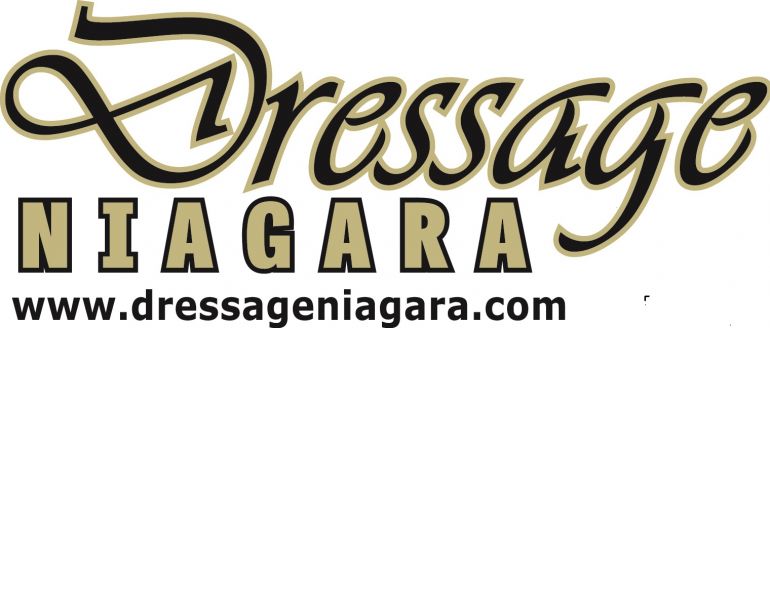With Karen Pavicic
By Jess Hallas-Kilcoyne
Impulsion is best defined as the channelling and controlled release of the energy in the horse's body which is created by the engagement of the hind legs. A horse that moves with impulsion gives the impression of contained power, with steps that can be described as lively and expressive, while maintaining total relaxation and softness through the body for overall elasticity.
According to dressage coach, trainer, and FEI level competitor Karen Pavicic, “A horse moving with impulsion will be relaxed, swinging through the back, and attentive to the rider.” She describes impulsion as a cycle of forward-moving energy that is generated by the rider's legs and flows through the horse's body into the rider's hand.
“It is not possible to shape energy that you do not have, so riding your horse actively forward is essential,” says Karen. But, she is quick to note, “Forward does not mean fast!”

Forward does not mean fast! Here, Karen and Don Daiquiri demonstrate the true impulsion that comes from the activation and engagement of the hind legs. Photo: Sheri Scott
“Impulsion means that the horse has more carrying weight on the hind legs,” she explains. “The rider’s leg activates the horse’s hind legs to track up underneath his centre of gravity to better carry the weight of the rider. The cycle of energy flows from the horse’s hind legs stepping under, then up over the back, through the neck, poll, and mouth, and into the rider’s hands. The energy is then contained or shaped with the use of half halts.”
The ultimate goal is that the horse learns to move with impulsion on his own, but in the beginning, the rider will need to repeat the process of initiating the energy cycle, allowing the horse to carry himself in between. “The length of time that the horse is able to carry himself should gradually increase,” says Karen.
Strengthening exercises, such as riding over ground poles or cavaletti and hill work, develop the hindquarters, making it easier for the horse to move with impulsion. Be sure to introduce this work gradually to avoid overworking the horse and making him sore. Exercises that engage the hindquarters, such as leg-yielding and frequent transitions, are also excellent for developing impulsion.
Exercise #1: Frequent Transitions
Beginning in a forward, active working trot, ride a transition to walk, walk for two to three steps, and promptly trot on again. Similarly, in canter, ask for a downward transition and ride two to three steps in trot before picking up your canter again. When riding canter-trot-canter transitions, always maintain the canter for at least half a circle before riding another transition to trot.
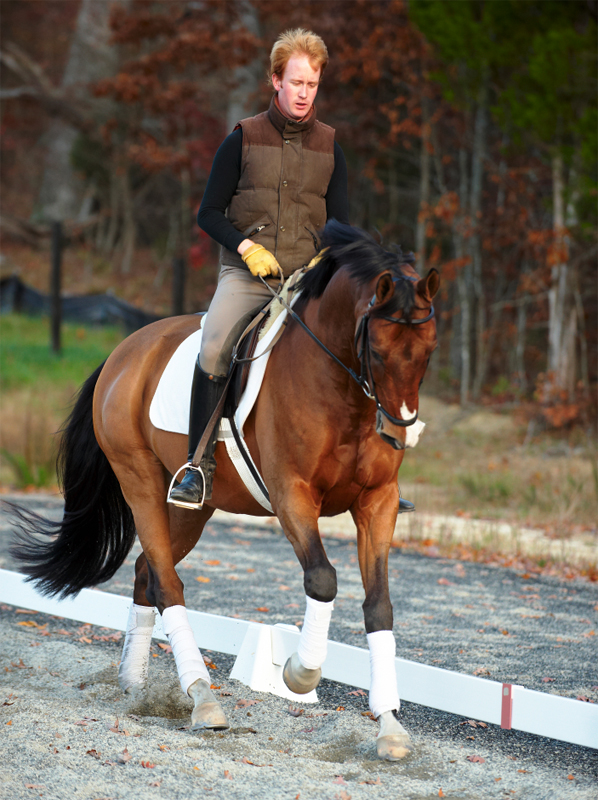
Impulsion is about the cycle of energy flowing from the horse's hind legs stepping under, up over the back, through the neck, poll, and mouth, and into the rider's hands. Photo: Christina Handley, www.ChristinaHandley.com
“Transitions are my favourite way to increase impulsion,” says Karen. “Repeating transitions multiple times fairly close together results in a better response to the rider’s leg and hand, thereby increasing [the horse’s] engagement.”
“Some horses will respond quite quickly when you start riding the transitions closer together, and that can lead to the horse anticipating the transition,” she warns. “If the horse starts to get tense or nervous, regroup, reestablish your rhythm, and start again making sure the horse is relaxed, swinging through the back, and attentive to the rider.”
Don’t forget about the importance of rider position when it comes to developing your horse’s impulsion. “I often see riders sitting behind the vertical to try to increase impulsion,” explains Karen, “but this prevents the horse from being able to lift his back and use his hind legs correctly.” Without a soft, centered seat for the horse’s back to come up into, the cycle of energy is interrupted.
If you have any doubts over whether your horse is moving forward with impulsion or just rushing, check with Karen’s Counting over the Cavaletti exercise.
Exercise #2: Counting over the Cavaletti
Place two cavaletti, or ground poles, about 40 metres apart (the precise distance is not overly important) down the long side of the ring. Ride over the cavaletti in a working trot or canter, counting the number of strides your horse takes in between. The next time around, ride over the cavaletti in lengthened trot or canter, and count the strides again.
“You can also count the strides between two letters in a dressage ring,” says Karen. “If the horse is truly lengthening his stride, the number of strides will be fewer.”
If the strides are not fewer, your horse is likely moving faster rather than with impulsion. “Going faster means that the horse will take short, quick strides because the weight is on the forehand,” Karen explains. “When the horse has impulsion, the strides are actually longer and he gets more air time. He’s transferring that energy forward in a more positive way.”
“The engagement and propulsion of the hind legs creates suspension in the stride and increases the lightness of the shoulders, thus enabling the horse to lengthen his stride,” she continues. “Impulsion refers to the thrust of the hind legs and the more thrust the horse has, the better the horse will be able to do a lengthened stride. Then, later on, the medium and extended gaits are developed out of the lengthened stride.”
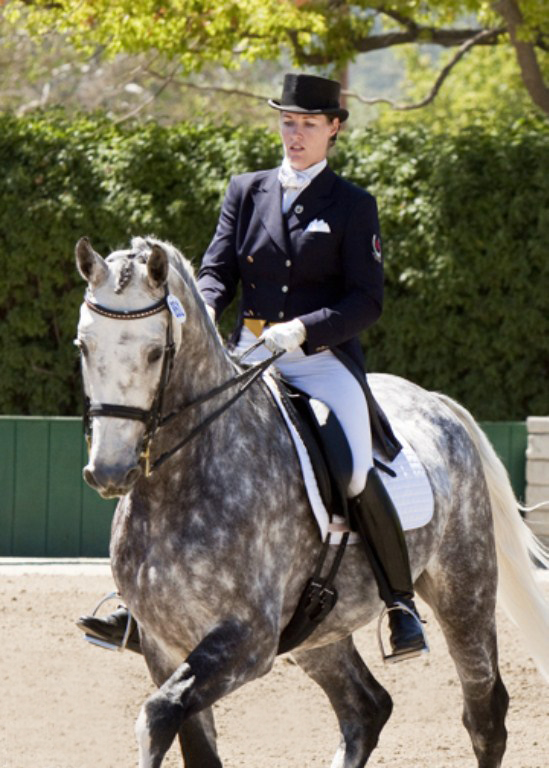
Photo: Genia Ply Photography
Karen Pavicic is a National Coaching Certification Program Level III dressage coach who trains at Centre Line Stables in Richmond, BC. She has successfully trained numerous horses to the FEI level and won many accomplishments in national and international competition. Highlighting Karen’s 20-plus year career at the international level is her nine years as a member of the Canadian Equestrian Team, during which time she was a member of the Canadian silver medal-winning team at the 2007 Pan American Games in Rio de Janeiro, Brazil. Karen continues to train and compete, representing Canada in the international dressage arena riding Don Daiquiri, co-owned by Jayne Essig, and London Z, co-owned by Lynda Holl. www.kpdressage.com
Main Photo: Shutterstock/Pirits



